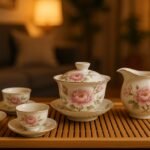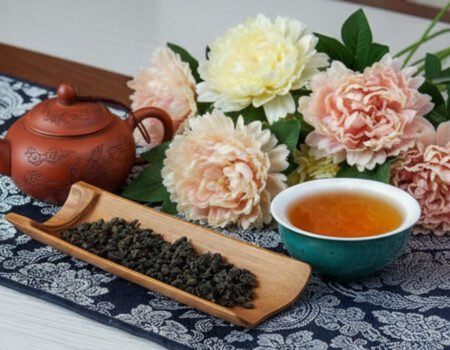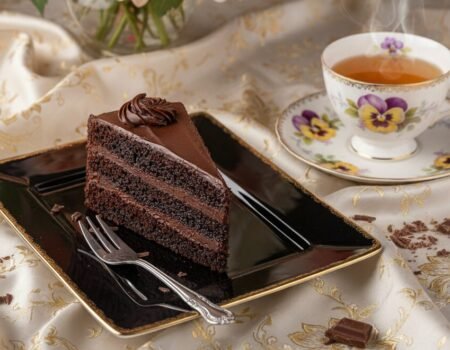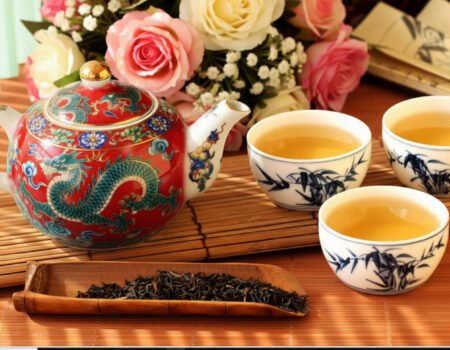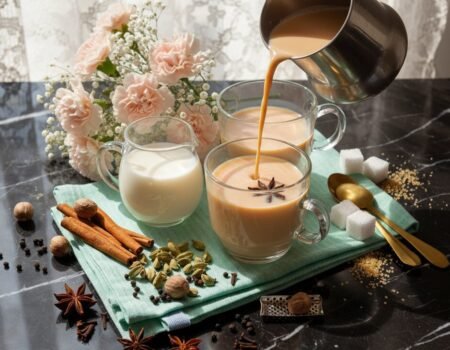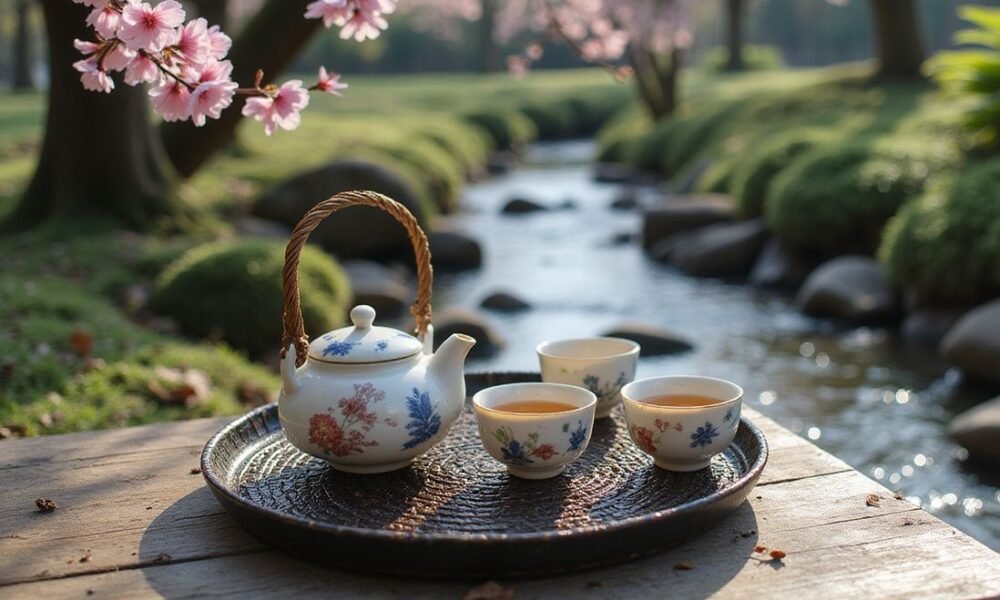
Exploring the Intriguing World of Tea Culture and Teaware
Index
Index
Tea vessels date back over 2,000 years, with each culture developing unique designs that enhance specific tea types.
This guide explores essential teaware from China, Japan, Britain, and beyond, showing how each piece shapes your brewing experience. Discover how the right teapot, cup, or bowl can transform your daily tea ritual.
Key Takeaways
- Teaware dates back over 2,000 years, with each culture creating unique designs for specific tea types.
- Chinese Yixing clay teapots absorb tea oils over time, creating a living history of past brews and enhancing flavor.
- Japanese tea ceremonies use specific vessels like kyusu teapots (fired at 1300°C) and chawan bowls that reflect wabi-sabi philosophy through deliberate imperfections.
- British afternoon tea became a status symbol in the 1840s thanks to Anna Russell, the Duchess of Bedford, with an estimated 7.6 million people participating annually in the UK today.
- Moroccan tea culture centers around the Berrad teapot used for high-pouring rituals, where guests receive three cups representing life’s journey from bitter to sweet.
The Cultural Significance of Teaware
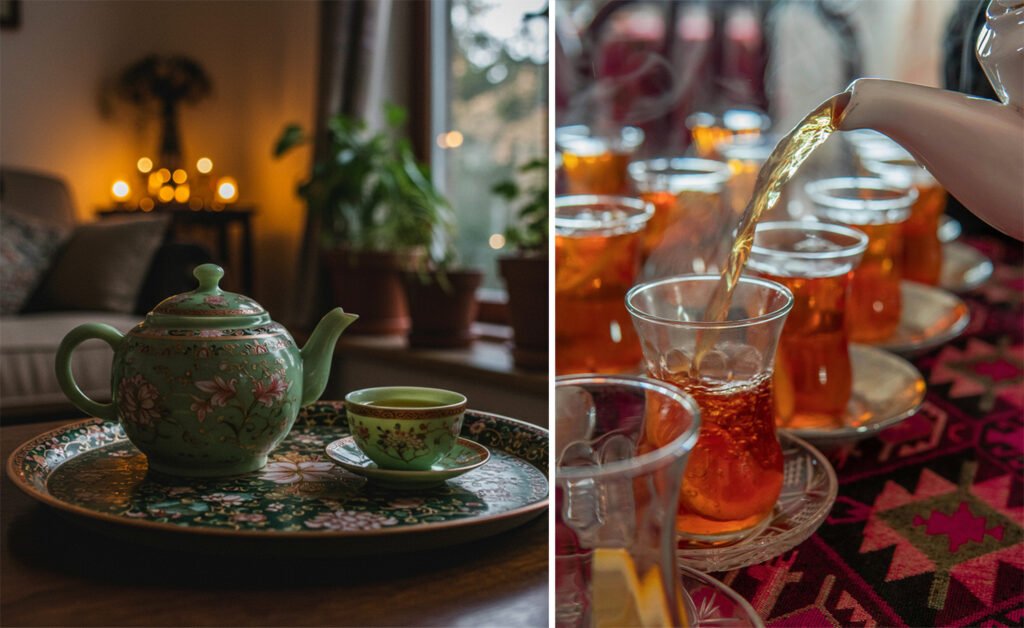
Teaware stands as a silent storyteller across cultures, revealing values and traditions through its shapes, materials, and uses. Each cup, pot, and serving vessel carries deep meaning beyond its practical function, showing how different societies view hospitality, social status, and the ritual of sharing tea.
Teaware as a Bridge in the Tea Experience
Tea vessels serve as vital connectors between humans and the tea leaf. Each cup, pot, or bowl transforms the simple act of drinking into a meaningful ritual that spans cultures and centuries.
The gaiwan from China, chawan from Japan, or porcelain teacup from Britain all shape how we perceive flavor, aroma, and temperature. These items promote self-awareness and tranquility while we sip, creating moments of pause in our busy lives.
The right teaware enhances both the physical properties of the brew and our emotional connection to it.
Different cultures express their values through unique teaware designs. A handcrafted Yixing teapot absorbs tea oils over time, creating a living history of past brews. Japanese tea bowls embrace wabi-sabi philosophy through deliberate imperfections that celebrate natural beauty.
British bone china sets with delicate patterns reflect social traditions and hospitality standards. The materials—clay, porcelain, cast iron, bamboo—each affect heat retention, flavor development, and drinking comfort.
This cultural adaptation of teaware reflects how communities worldwide have customized their tea experience to match local aesthetics and practical needs. Next, we’ll explore how teaware embodies cultural philosophies and symbolism across tea-drinking societies.
Embodiment of Cultural Philosophies and Symbolism
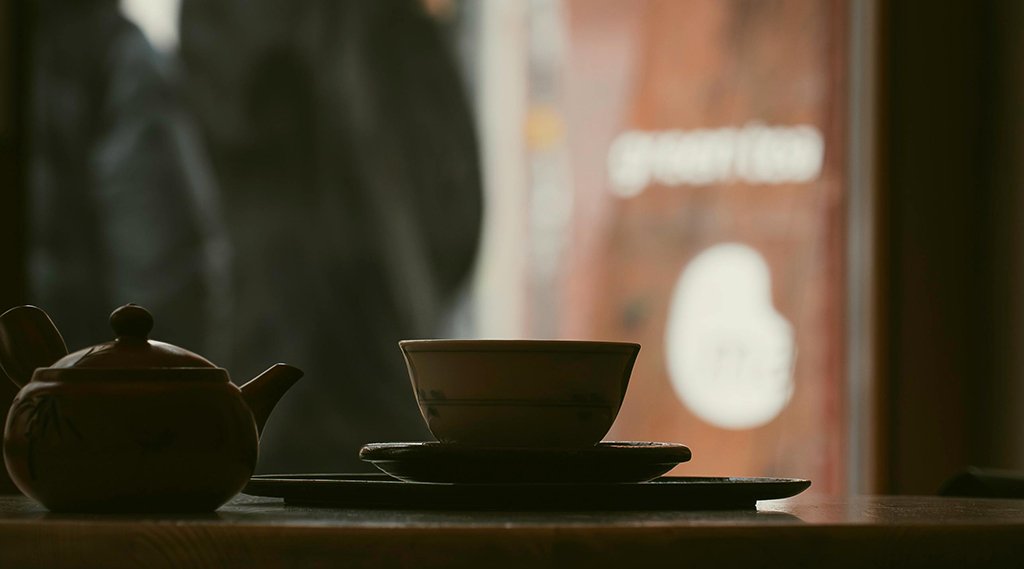
Teaware serves as physical expressions of deep cultural values across different societies. Chinese tea vessels reflect Buddhist, Taoist, and Confucian principles through their shapes, materials, and uses.
The simple Yixing clay pot shows the Taoist respect for natural materials, while the precise measurements in Japanese chawan bowls mirror Zen Buddhist focus on mindfulness. Each piece tells a story about balance, harmony with nature, and meditation practices that shaped these traditions over centuries.
Tea ceremonies became status symbols during the Ming and Qing Dynasties, with specific vessels marking social rank and cultural refinement. The unglazed purple clay teapots absorb tea flavors over time, representing the Buddhist concept that experiences leave lasting impressions.
Japanese matcha bowls display wabi-sabi through their deliberate imperfections, celebrating beauty in simplicity. Modern tea culture preserves these philosophical connections while adapting vessels for today’s lifestyles.
Community tea events now use traditional teaware to teach cultural values and create shared experiences among participants.
Chinese Teaware and the Gongfu Cha Ceremony
Chinese teaware stands at the center of the Gongfu Cha ritual, where each vessel serves a specific purpose in drawing out tea’s full character. The Yixing clay teapot and porcelain gaiwan work together with bamboo tools and copper kettles to create a tea experience that honors centuries of tradition.
Key Vessels: Yixing Teapot and Gaiwan Symbolism
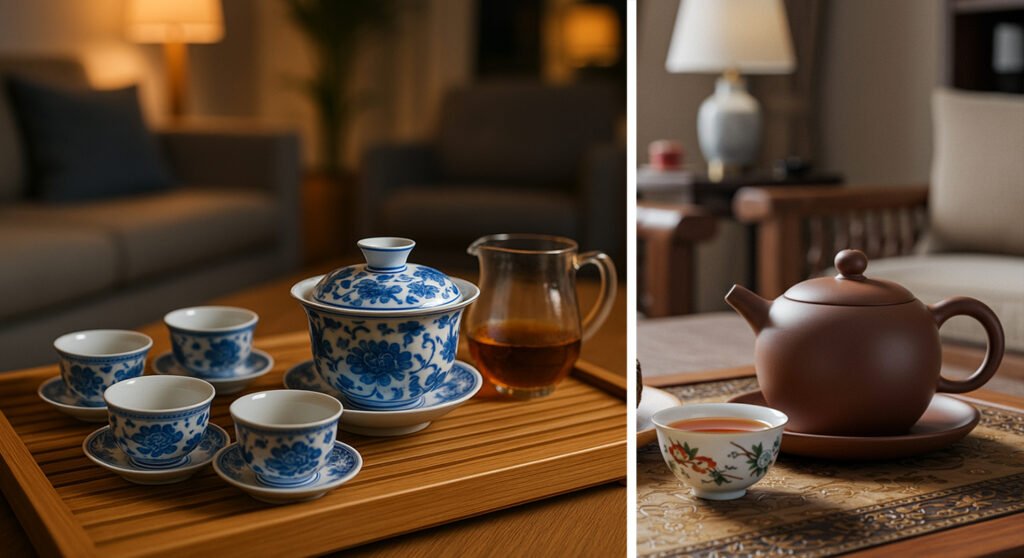
Yixing teapots stand as treasured items in Chinese tea culture, crafted from special purple clay (zisha) that absorbs tea flavors over time. The price usually depends on craftsmanship and clay quality.
Tea experts prize these pots for their ability to enhance tea taste through porous clay that “remembers” previous brews. The unglazed surface creates a unique relationship between pot and tea, making each vessel ideal for specific tea types.
Gaiwans serve as essential tools in the gongfu tea method, featuring a simple design of bowl, lid, and saucer that allows precise brewing control. The vessel’s name translates to “lidded bowl,” reflecting its straightforward yet functional form.
Tea masters value gaiwans for their versatility with delicate teas and the ability to observe leaf unfurling during steeping. Lu Yu, a historical tea sage, recognized such vessels as crucial for proper tea preparation centuries ago.
The fairness pitcher works with these key vessels to ensure equal tea distribution among all participants.
Supporting Items: Fairness Pitcher, Tea Tray, and Cups
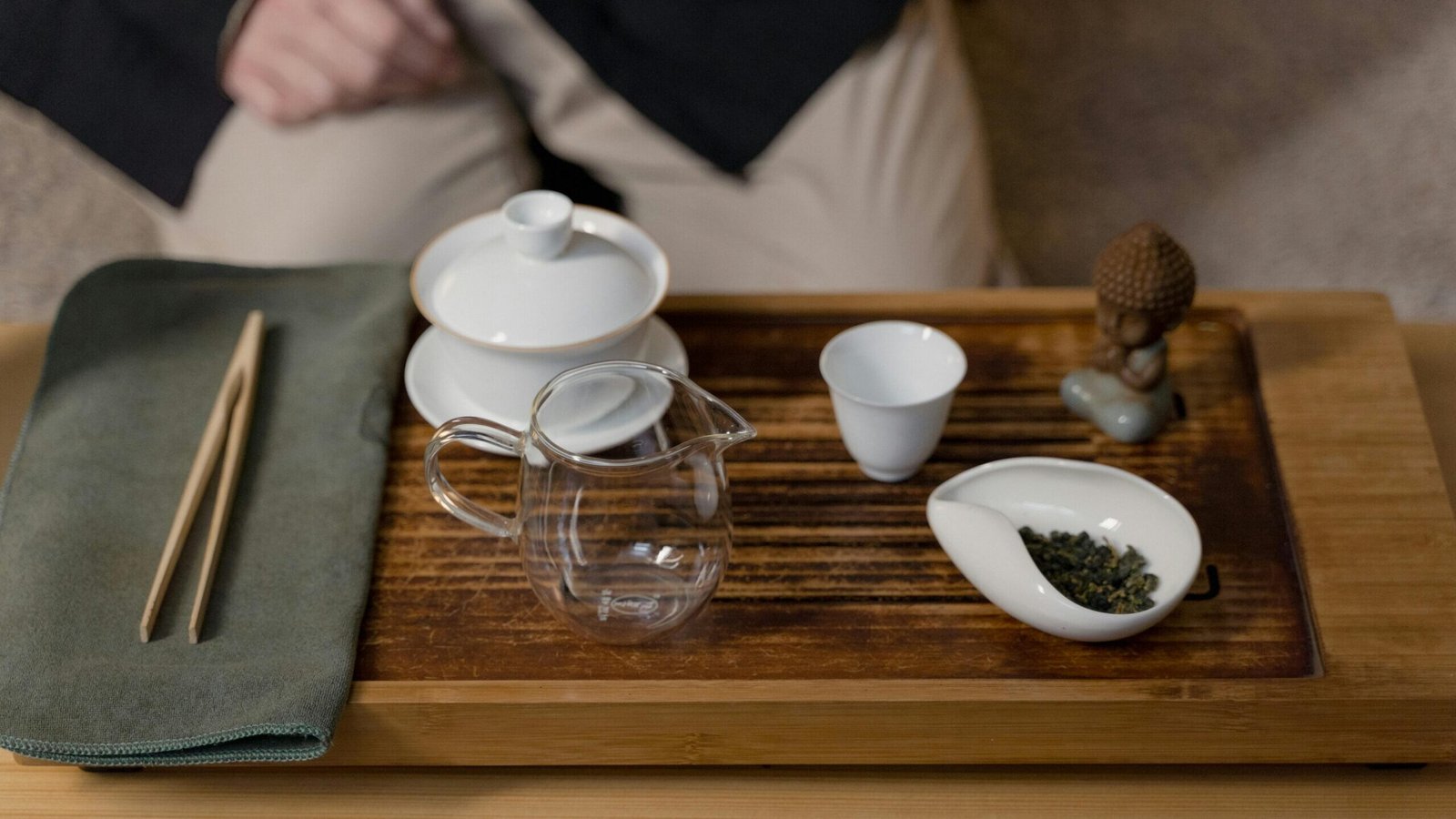
Supporting tools enhance the Gongfu tea experience beyond the main brewing vessel. These items serve specific functions that help create a complete tea ceremony with proper technique and tradition.
Essential Serving Vessels
Fairness Pitchers and Water Vessels
These core vessels form the foundation of proper tea service. Fairness pitchers (sharing pitchers) ensure each cup receives tea of equal strength and flavor – Duidui’s Fairness Pitcher prevents over-steeping by giving tea a place to rest after brewing. Water vessels in glass or ceramic allow you to check water clarity before brewing, while their pour control helps maintain the perfect brewing temperature.
The Cup Experience
Fragrance and Drinking Cups
Traditional tea service uses two distinct cup types that create a complete sensory journey. Tall, narrow fragrance cups (wénxiāng bēi) capture and concentrate the tea’s aroma – tea is poured into these vessels first, then transferred to the drinking cup, savoring the lingering scent in the empty vessel. Drinking cups (pǐnmíng bēi) come in various shapes, each offering unique experiences. Palm cups feature rounded, bowl-like forms that nestle comfortably in cupped hands, while straw hat cups have wide brims that spread aromas and cool tea quickly.
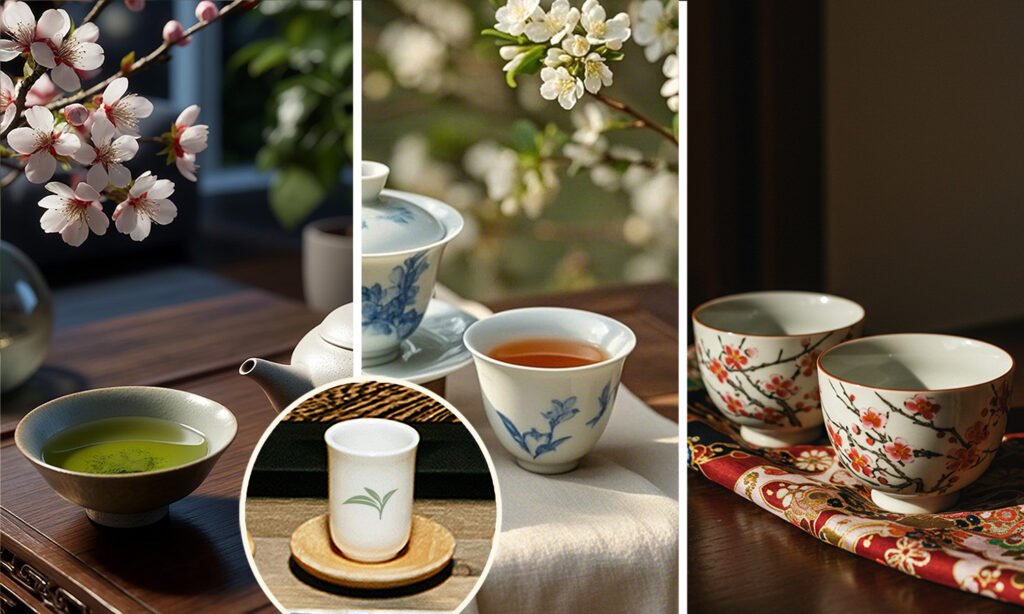
Materials and Temperature Control
Cup materials dramatically influence your tea experience through heat retention and texture. Porcelain cups cool tea rapidly, making them perfect for delicate greens and whites that shine at lower temperatures. Clay cups hold heat longer, ideal for oolongs and blacks that reveal complexity as they cool slowly. The material’s texture also affects mouthfeel – smooth porcelain offers clean, crisp sensations while unglazed clay adds earthy depth.
Complete Tea Sets
A well-curated tea set adapts to different teas and occasions. Quality sets often include both fragrance and drinking cups, with variety in the drinking vessels – two palm-shaped cups for concentrated tasting, two straw hat cups for casual sipping, plus a fairness pitcher for even distribution. This combination lets you match cup style to tea type and drinking preference.
Precision Tools
Measuring and Filtering
Accurate measurement and clean pouring elevate your tea ritual. Tea scoops ensure consistent brewing strength – bamboo works beautifully for delicate greens, while metal or ceramic handles robust black teas. Fine mesh strainers catch loose leaves when pouring from pot to pitcher, preserving the liquid’s clarity without affecting taste.
Supporting Elements
Practical and Ceremonial Items
Every tea ceremony benefits from these thoughtful additions. Tea trays in bamboo, ceramic, or stone catch spills and hold rinse water, ranging from simple functional designs to ornate cultural artworks. Soft cotton tea towels protect your hands from hot vessels while maintaining a secure grip. Tea pets – small clay figures that absorb tea during ceremonies – bring joy to the ritual and develop beautiful patinas over time as you share your tea with them.
Japanese teaware shows similar attention to detail but follows different aesthetic principles rooted in Zen philosophy.
Japanese Teaware in Chanoyu (The Way of Tea)
Japanese teaware stands at the heart of Chanoyu, a ritual that goes beyond simple tea drinking. Each vessel and tool serves a specific purpose in this ancient practice that honors simplicity, respect, and mindfulness.
Core Items: Kyusu, Chawan, and Natsume
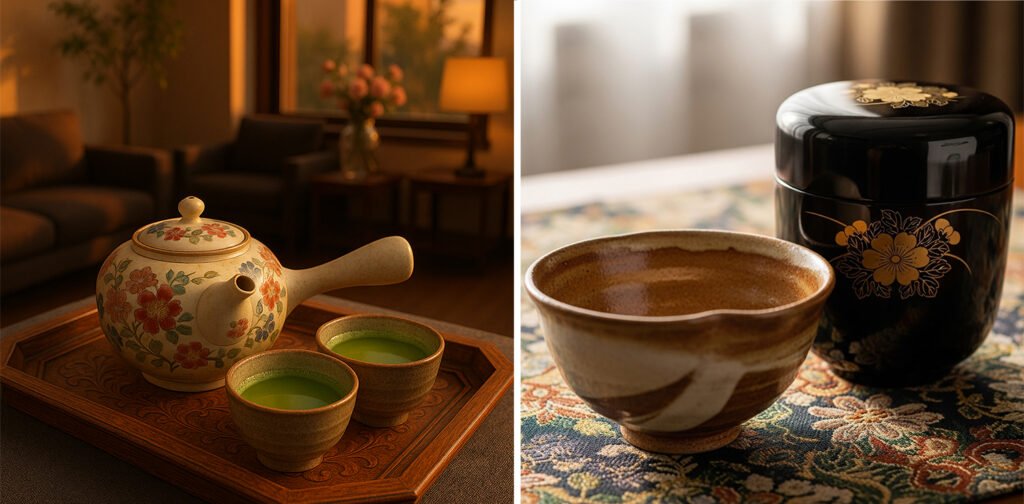
Traditional Japanese tea ceremonies rely on specific vessels that blend function with beauty. Each piece serves a unique purpose in the ritual of tea preparation and enjoyment.
Core Brewing Vessels
The essential vessels form the heart of Japanese tea preparation:
Kyusu Teapot
- Side-handled teapots ranging from 120ml to 400ml capacity, perfect for brewing small batches of green tea
- Features built-in ceramic sieve that strains tea leaves during pouring
- Fired at temperatures reaching 1300 degrees Celsius, creating durable stoneware that enhances tea flavor
- Clay absorbs subtle tea notes over time, allowing each pot to develop unique character with regular use
Chawan Tea Bowl
- Primary drinking vessel for matcha and other Japanese teas
- Wide-mouthed design allows you to enjoy the aroma while sipping
- Tea masters select different styles based on season—deeper bowls for winter, shallower ones for summer
- Connects modern tea drinkers to centuries of tradition
Supporting Tools and Accessories
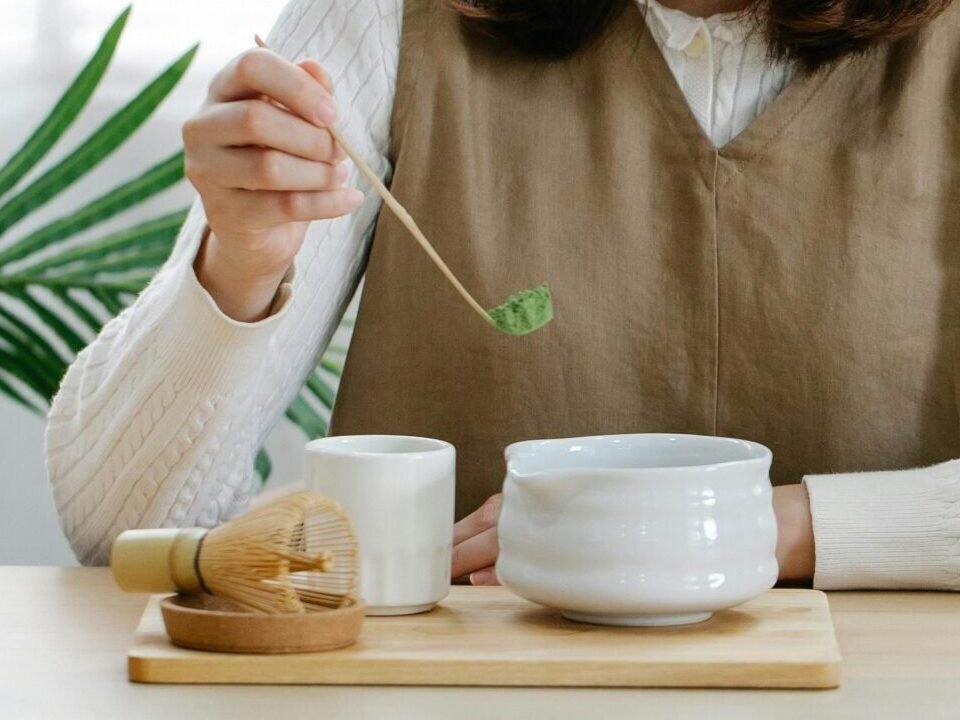
These specialized tools ensure precise preparation:
Storage and Measuring
- Natsume (tea caddy) stores powdered matcha with tight-fitting lids to preserve freshness
- Often displays lacquerwork or decorative elements
- Bamboo chashaku (tea scoop) measures precise amounts of matcha powder
Preparation Tools
- Chasen (bamboo whisk) blends matcha powder with hot water
- Creates signature frothy texture that defines properly prepared matcha
- Simple design highlights the importance of technique in tea preparation
Materials and Craftsmanship
Quality Considerations
- Complete tea sets reach about 10 kg for handcrafted pieces, reflecting substantial materials and craftsmanship
- Material choice affects the tea experience—ceramic, porcelain, and earthenware each impart different qualities
- Clay composition influences both heat retention and flavor development
- Each material type contributes to the overall sensory experience of tea enjoyment
Essential Tools: Chasen, Kama, and Furo/Ro
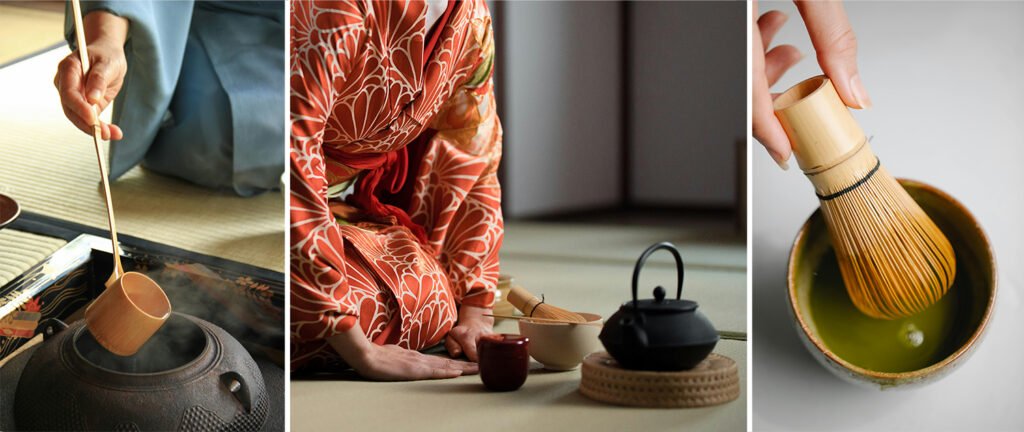
Japanese tea ceremonies rely on specific tools that blend beauty with function. Each utensil plays a vital role in creating the perfect cup of matcha or green tea.
Essential Tea Preparation Tools
The Chasen Whisk
The most recognizable tool in Japanese tea making:
- Artisans carve each whisk from a single piece of bamboo
- Split into 80-120 fine tines that create perfect matcha froth
- Bamboo provides flexibility and strength for proper whisking technique
- Natural material avoids adding unwanted flavors to delicate tea
Water Heating Vessels
Kama Kettle
- Heats water to precise temperatures for different tea types
- Traditionally crafted from copper or iron for excellent heat retention
- Essential for maintaining water at optimal brewing temperature
Tetsubin (Cast iron Kettle)
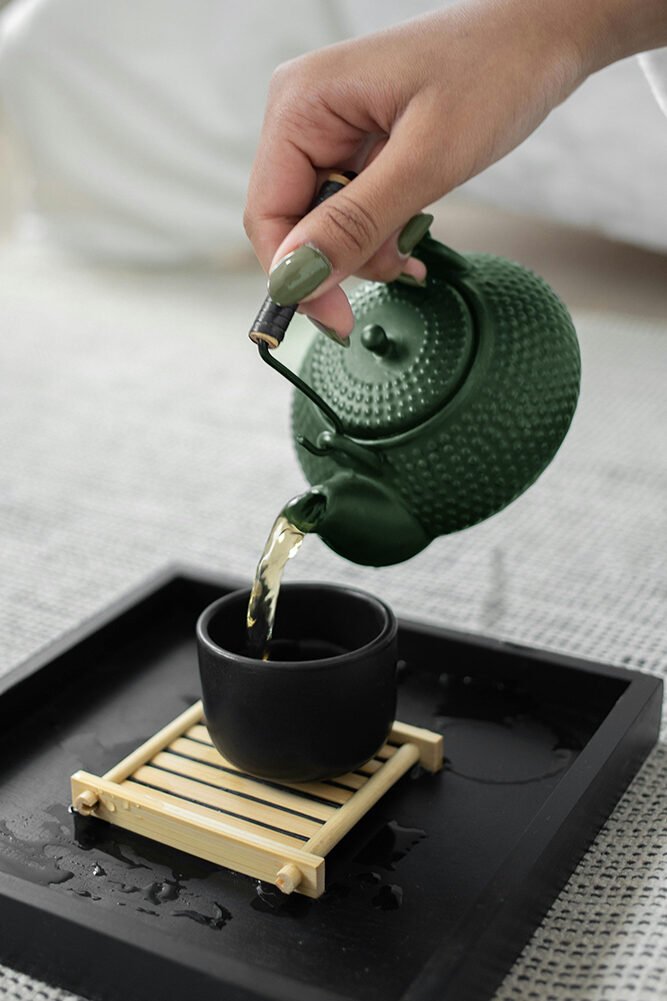
- Adds trace minerals to water that enhance tea flavor
- Creates smoother, more rounded taste profile according to tea masters
- Combines functional heating with mineral enrichment
Seasonal Heat Sources
Tea ceremonies adapt heating methods to match the seasons:
Furo (Portable Brazier)
- Used during warmer months of spring and summer
- Allows tea ceremony to move outdoors or between rooms
- Provides flexibility in ceremony location
Ro (Sunken Hearth)
- Built into tea room floor for colder months
- Provides more consistent warmth during winter ceremonies
- Placement of kama follows strict seasonal rules
Philosophy and Aesthetics
- Tea utensils express Zen principles beyond mere function
- Simple designs embody wabi-sabi values celebrating imperfection and natural aging
- Reflect ceremony’s deep connection to nature through seasonal adaptations
The British tea tradition offers a striking contrast with its elaborate porcelain sets and social rituals.
Zen Principles and Wabi-Sabi in Japanese Teaware
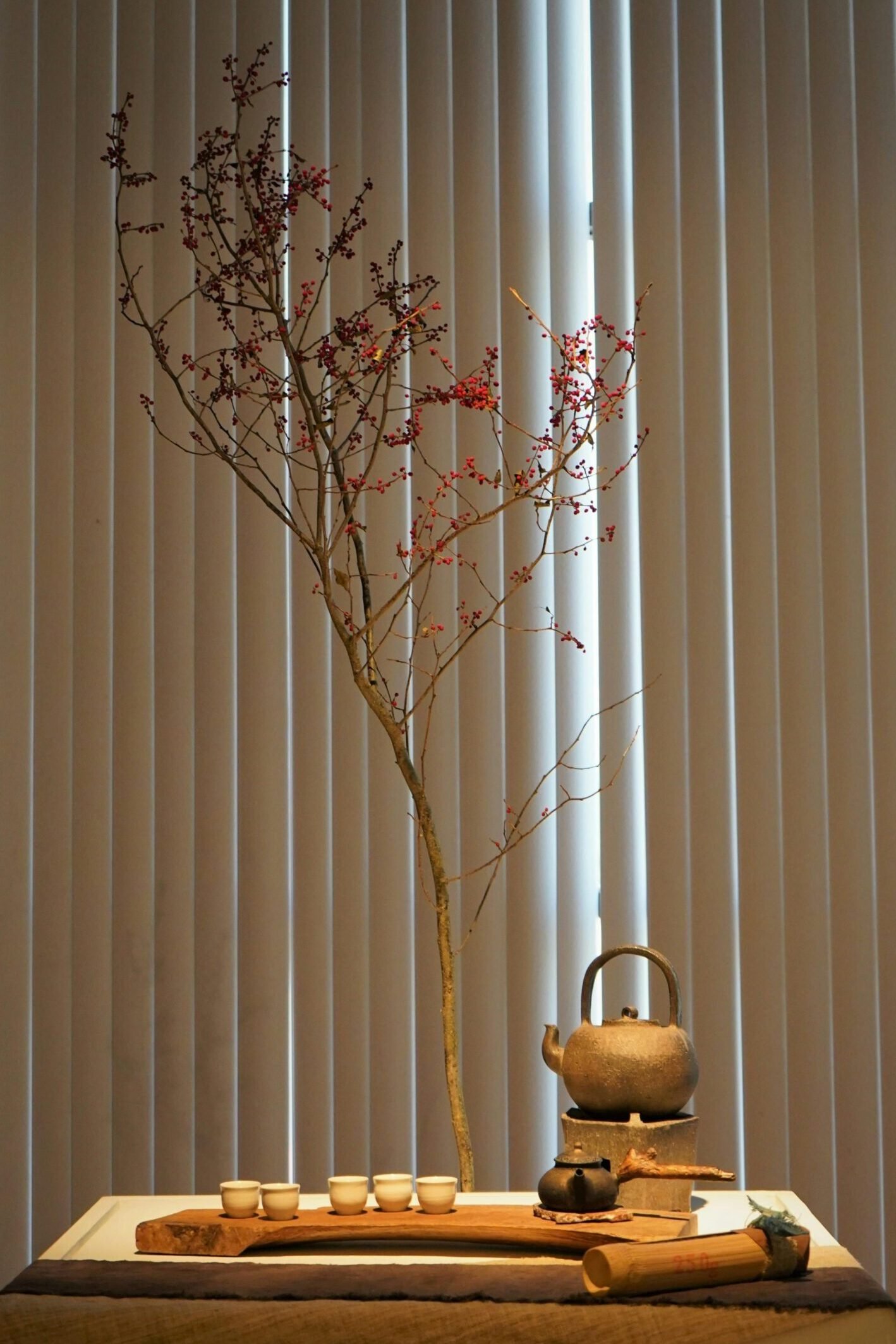
Zen philosophy shapes every aspect of teaware in the tea ceremony, creating tools that embody peace and mindfulness. Each chawan (tea bowl) and kyūsu (teapot) reflects the four key principles: harmony (WA), respect (KEI), purity (SEI), and tranquility (JAKU).
The handcrafted clay vessels often display deliberate imperfections, celebrating the wabi-sabi aesthetic that finds beauty in natural flaws. Tea masters prize these marks as unique expressions rather than mistakes to fix.
Teaware pieces made of raku clay or Shigaraki stoneware showcase this philosophy through their earthy tones and rough textures. The uneven glaze on a matcha bowl or the asymmetrical handle of a bamboo whisk serves a deeper purpose beyond function.
These elements create a sensory experience that pulls the tea drinker into the present moment. The careful selection of materials—ceramic, porcelain, or iron—helps build the tranquil atmosphere essential for proper tea enjoyment.
British teaware traditions offer a fascinating contrast to these Japanese principles, with their focus on formal elegance and social status.
British Teaware and the Afternoon Tea Tradition
British teaware tells a story of social status through its fine bone china sets, delicate teacups, and ornate silver teapots that became central to the Victorian ritual of afternoon tea – join us next time as we explore how these elegant vessels transformed a simple drink into a beloved cultural institution.
Components of a Classic British Tea Set
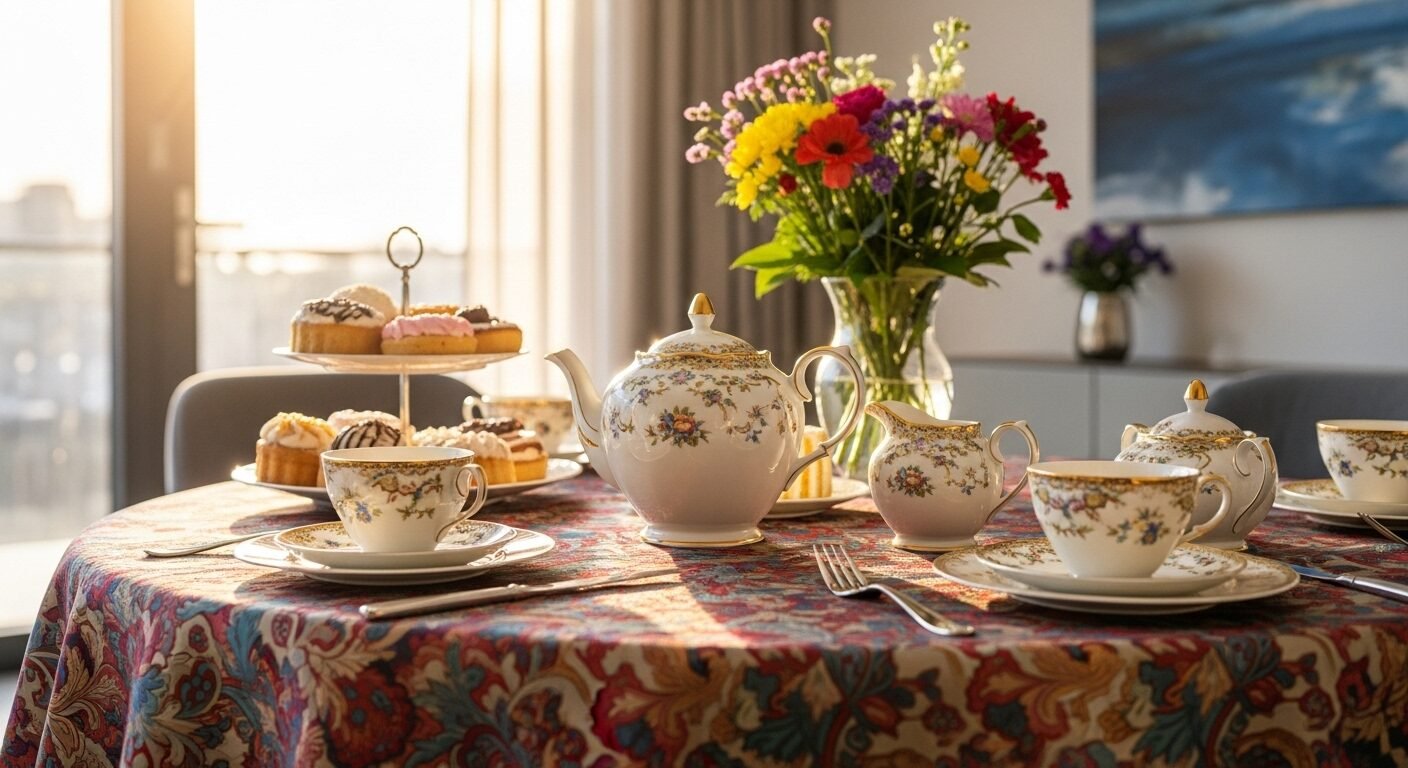
The classic tea set forms the heart of afternoon tea traditions across the United Kingdom. Each piece serves both a practical purpose and adds to the charm of this beloved social ritual.
Core Serving Vessels
The foundation pieces of traditional English tea service:
Teapot
- Centerpiece of any tea set, crafted from porcelain or bone china
- Features curved spout for smooth, controlled pouring
- Holds brewed tea at optimal temperature
- Commonly decorated with floral designs
Tea Cups and Saucers
- Delicate matching cups rest on coordinating saucers
- Saucers catch drips and provide space for teaspoons
- Fine bone china construction lets you appreciate the rich color of your brew
- Traditional size holds 6-8 ounces of tea
Accompaniment Vessels
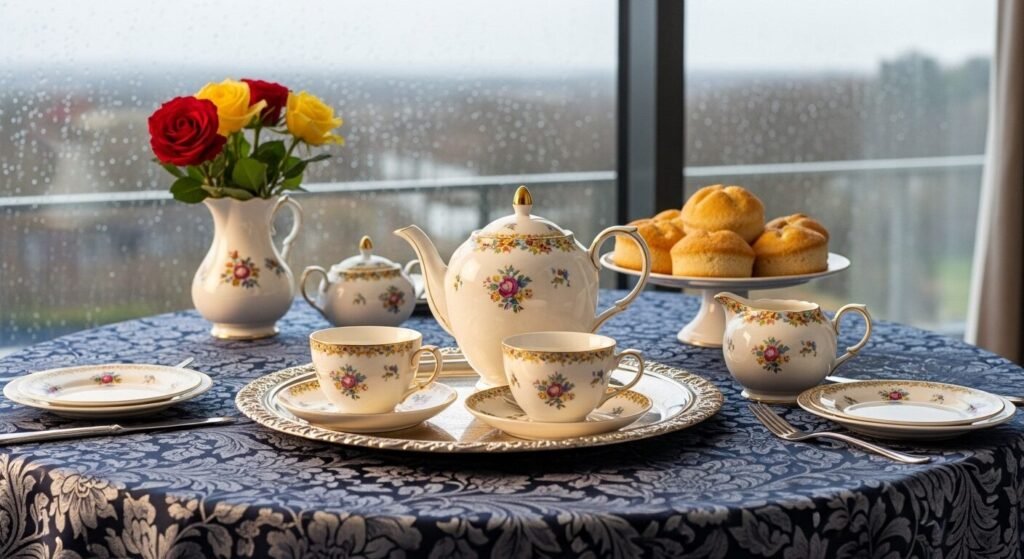
Specialized containers for tea additions:
Milk Jug/creamer
- Small pitcher designed to hold cold milk for black teas
- Matches the teapot’s design pattern
- Features petite handle for controlled pouring
- Typically holds 4-6 ounces
Sugar Bowl
- Covered dish protects sugar cubes or granulated sugar
- Includes slot for sugar tongs or serving spoon
- Lid keeps sugar fresh and prevents moisture
- Coordinates with overall set design
Functional Tools
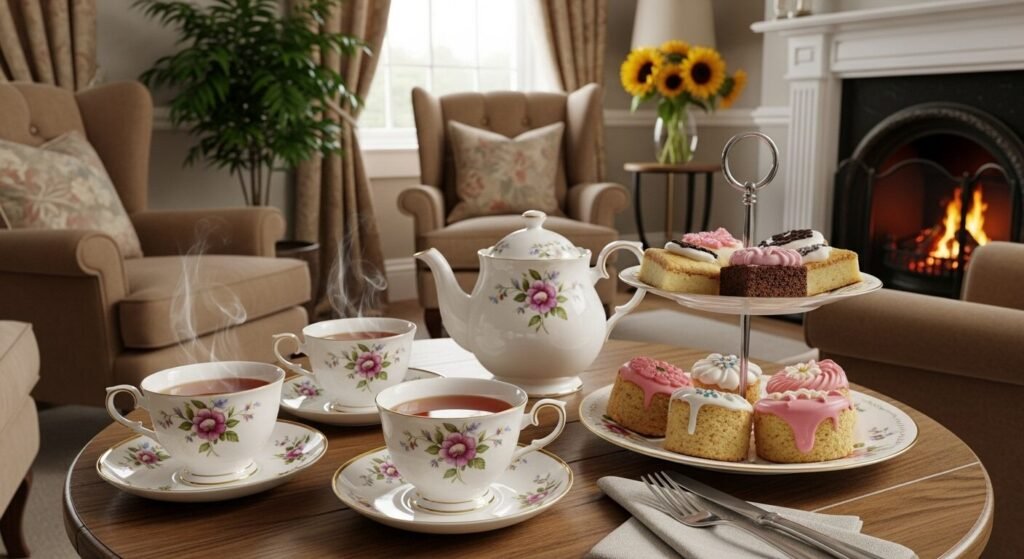
Tea Strainer
- Metal mesh tool catches loose tea leaves during pouring
- Rests on small dish to prevent tablecloth drips
- Available in various mesh sizes for different tea types
Tea Timer
- Small hourglass ensures perfect steeping time
- Available in sets with intervals for black, green, or white tea
- Helps achieve consistent brewing results
Presentation Elements
Cake Stand
- Tiered display showcases sandwiches, scones, and pastries
- Features two or three levels for visual appeal
- Larger items placed at bottom, small sweets on top
- Creates vertical interest on the tea table
Tea Tray
- Transports the complete set safely
- Creates attractive presentation foundation
- Available from simple wood designs to ornate silver-plated versions
- Provides defined serving area for the tea experience
The Japanese approach to teaware offers a striking contrast with its focus on simplicity and natural materials.
Materials and Design: Porcelain, Bone China, and Victorian Aesthetics
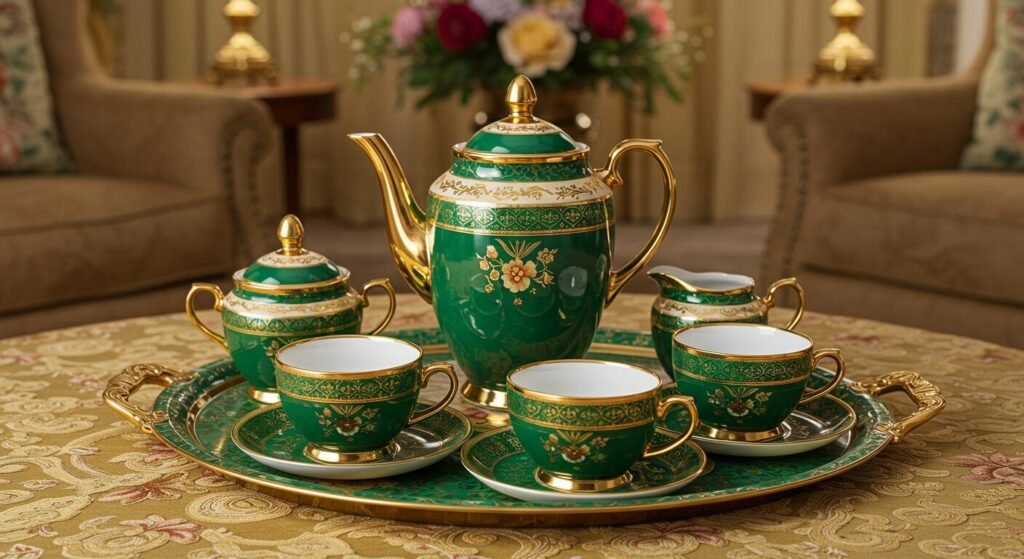
British teaware showcases a rich blend of materials that reflect status and artistry. Porcelain, despite its Chinese origins, became deeply woven into British tea culture, prized for its delicate appearance and durability.
Bone china, a British innovation containing actual bone ash, offered superior translucency and strength that made it perfect for elegant tea services. Victorian design elements added ornate flourishes, floral patterns, and gold accents that transformed simple cups into statements of refinement.
Tea sets during this period served as more than functional items—they represented a family’s social standing. The material culture around the tea table highlighted the fascinating exchange between Eastern and Western traditions.
Teapots featured graceful curves, while saucers prevented heat damage to polished tables. These carefully crafted pieces embodied both practical purpose and artistic expression, making each tea gathering a display of cultural sophistication through handcrafted teaware.
Afternoon Tea as a Social Ritual and Status Symbol
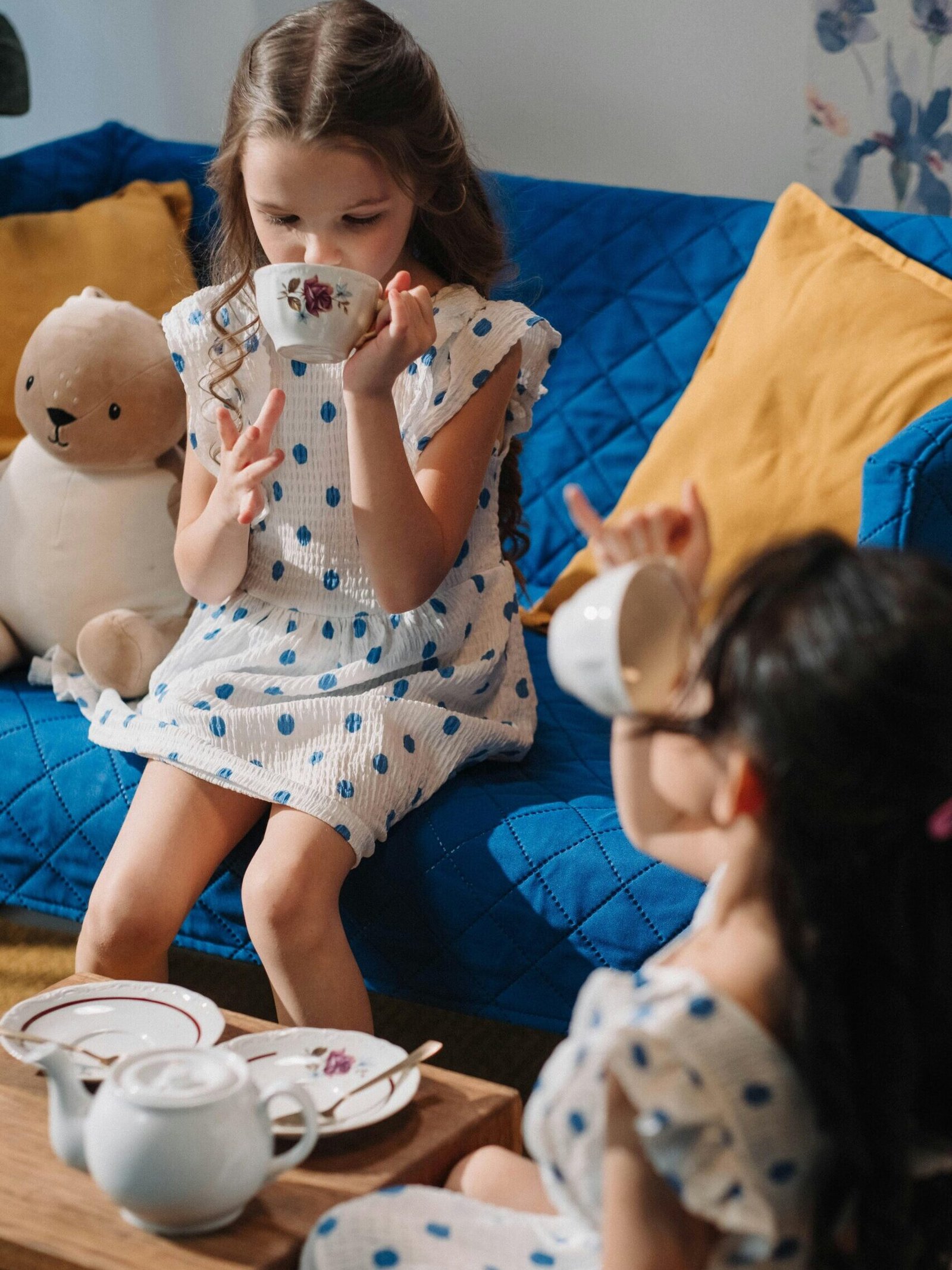
Beyond the elegant porcelain and bone china teaware, afternoon tea evolved into a powerful social institution in British society. Anna Russell, the seventh Duchess of Bedford, transformed tea drinking from a simple refreshment into a fashionable social event during the 1840s.
This ritual quickly became a status symbol among the upper classes, with elaborate tea services signaling wealth and refinement. Fine teaware, delicate finger sandwiches, and proper etiquette all played crucial roles in this cultural practice.
The social impact of afternoon tea extends far beyond mere refreshment, with an estimated 7.6 million people participating in this tradition annually across the UK. What began as a luxury affair has become a cherished cultural touchstone that reflects social dynamics and promotes mental well-being through relaxed conversation.
Tea gatherings create spaces where relationships form, business deals develop, and social bonds strengthen over steaming cups and sweet treats. The ritual maintains its cultural significance today, though now more accessible across different social classes than in its exclusive beginnings.
Moroccan Teaware: Hospitality Through Mint Tea
Moroccan teaware brings the desert’s warmth into every home through its gleaming brass pots and colorful glass cups. The ritual of mint tea serves as the cornerstone of Moroccan hospitality, where guests receive three cups – the first bitter as life, the second strong as love, and the third gentle as death.
The Iconic Berrad Teapot and High Pouring Ritual
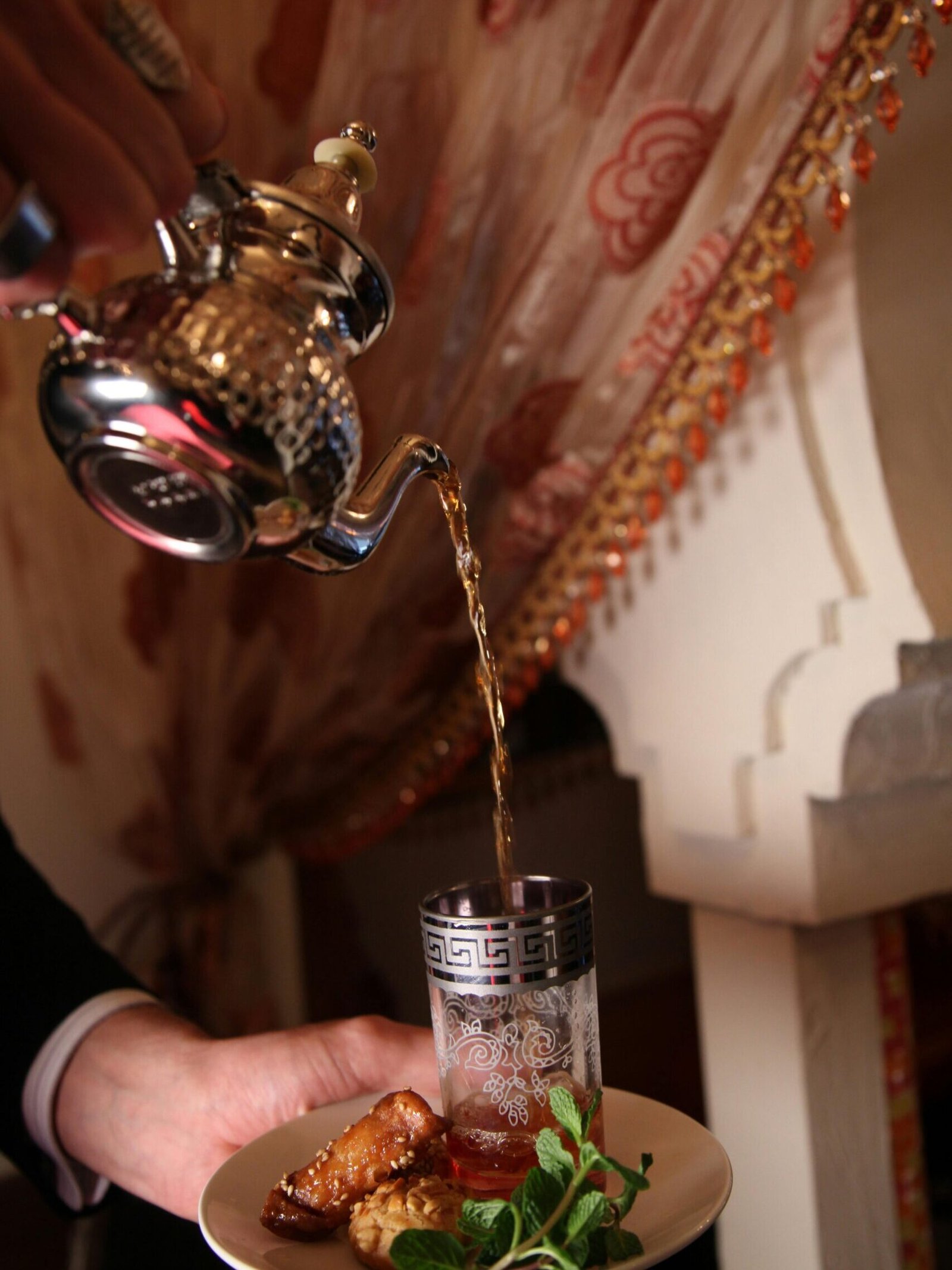
The Berrad teapot stands as the centerpiece of Moroccan tea culture, with its distinctive curved body and long spout designed for the famous high-pouring ritual. Tea masters lift the Berrad high above the glass, creating a thin stream that aerates the brew and produces a light foam on top.
This practice enhances both the flavor and visual appeal of the mint tea served to guests.
Each tea gathering follows a meaningful sequence of three servings from the Berrad, each cup telling a story about friendship. The first pour represents strength, the second symbolizes life’s challenges, and the third delivers sweetness.
This ritual transforms simple tea drinking into a profound social bond, making the Berrad more than just a vessel but a symbol of genuine hospitality in Moroccan homes.
Ornate Tea Glasses and the Significance of Sharing
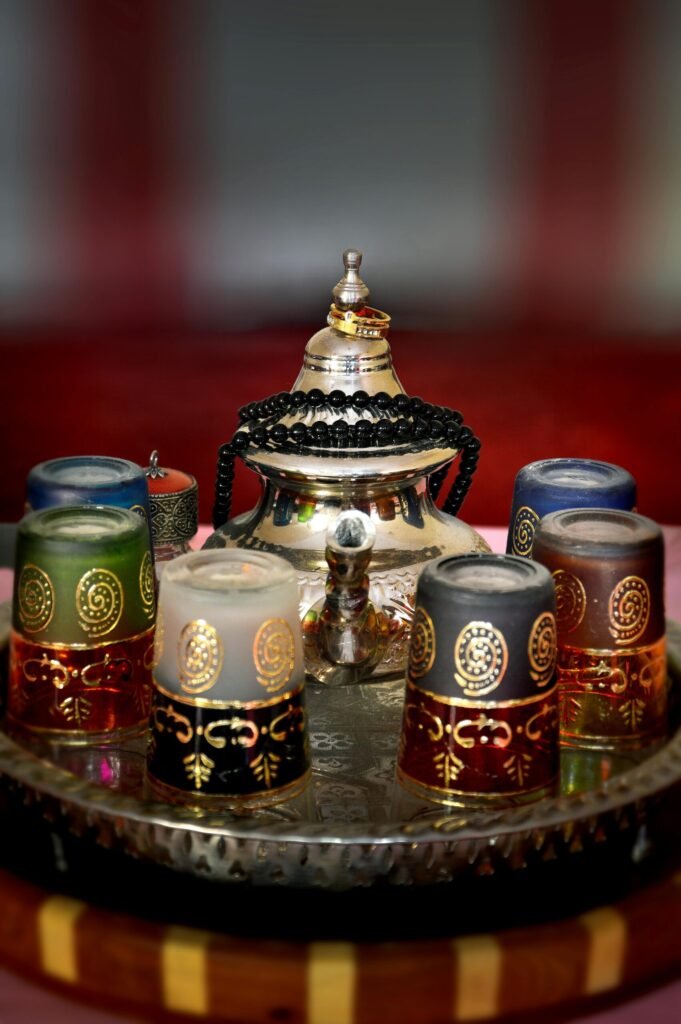
Moroccan tea glasses showcase stunning artistry with their gold trim and intricate designs that catch light as tea is poured. These handle-less vessels serve more than just practical purposes—they represent status, wealth, and cultural identity within families.
The custom of serving exactly three glasses during a tea session carries deep meaning in Moroccan hospitality. Each glass offers a different strength and flavor experience, creating a shared journey that bonds host and guest.
Sharing tea from these decorative glasses forms the backbone of social connections in Moroccan culture. Guests must accept at least one glass to honor their host, while refusing might cause offense.
This ritual transforms simple tea drinking into a meaningful social exchange that bridges differences between people. The careful selection of teaware for guests reflects the host’s respect and consideration, turning an everyday beverage into a powerful symbol of welcome and friendship.
Mint Tea as a Gesture of Welcome
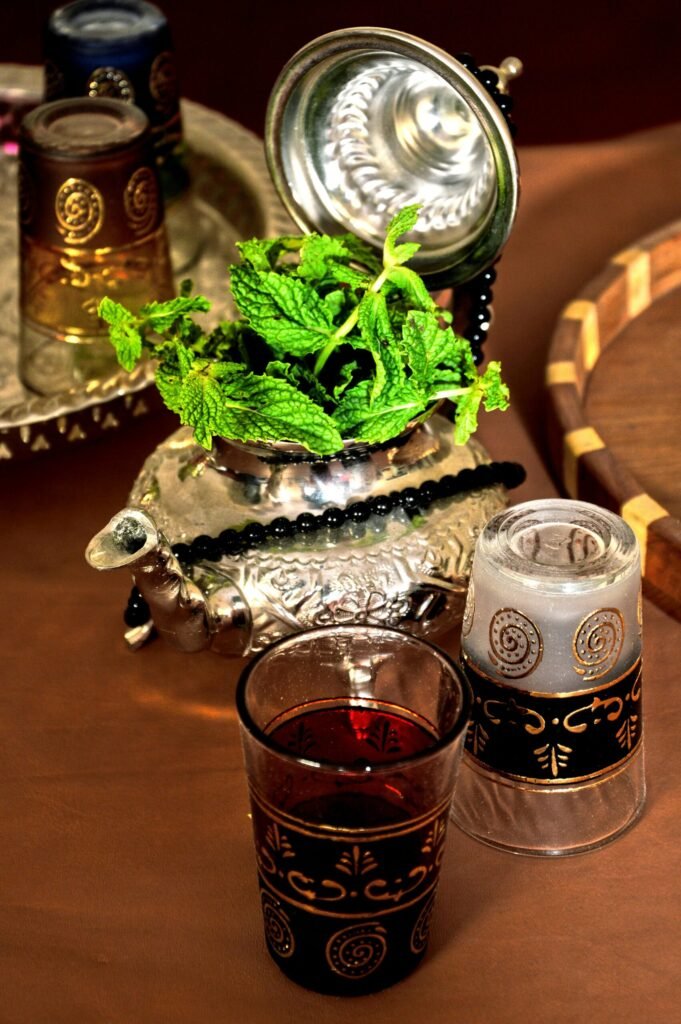
Mint tea stands as the ultimate symbol of hospitality across North Africa, especially in Morocco. Guests receive this fragrant brew immediately upon arrival, signaling respect and friendship from their host.
The ritual involves brewing green tea with fresh mint leaves and sugar in a decorative berrad (teapot), then pouring it from a height into small, ornate glasses. This dramatic high-pour method creates a frothy top and cools the tea slightly before serving.
The social aspect of mint tea extends beyond mere refreshment. Family gatherings, business meetings, and celebrations all feature this sweet, aromatic beverage as a centerpiece for connection.
Many hosts prepare three rounds of tea from the same leaves, following the local saying: “The first glass is gentle as life, the second is strong as love, and the third is bitter as death.” This tradition creates moments of reflection while building bonds between people.
The careful preparation and sharing of mint tea transforms a simple drink into a meaningful cultural exchange.
Russian Teaware: The Samovar and Communal Tea Drinking
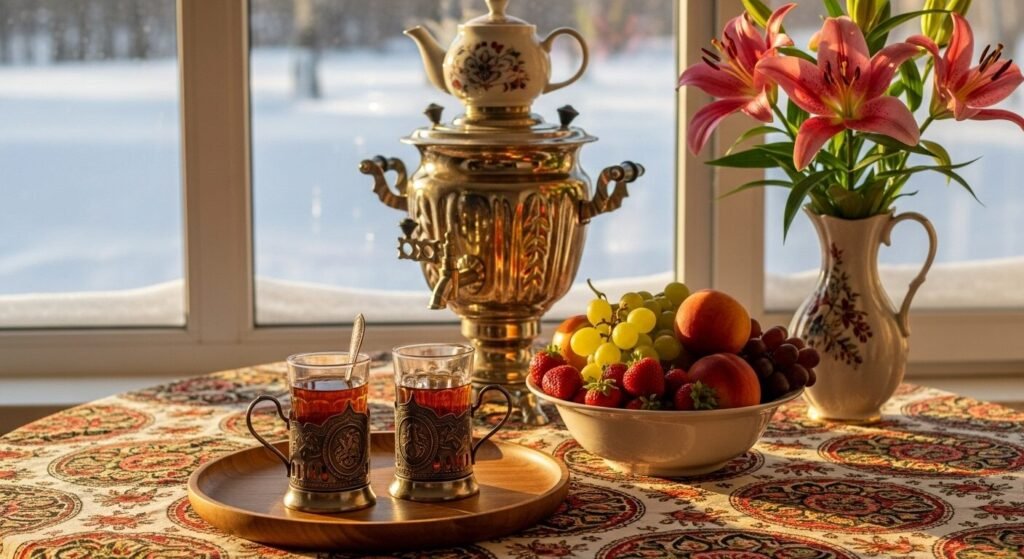
The samovar stands as the heart of Russian tea culture, bringing families together around its ornate brass body for hours of warm conversation. Russians serve a strong tea concentrate called zavarka from the samovar, then dilute it with hot water in glass holders known as podstakanniks that protect hands from the heat.
The Samovar as a Centerpiece of Hospitality
Russian homes place the samovar at the heart of tea gatherings, making it much more than a brewing vessel. This metal urn became so vital to Russian culture that by the 19th century, families without one were considered extremely poor.
Samovars feature a practical design with a tap for serving hot water and a chimney that allows smoke to escape during heating.
Catherine the Great played a major role in elevating tea drinking across Russia. She built special tea pavilions and helped spread the custom throughout society. Today, traditional samovars still bring people together around a shared pot of zavarka (concentrated tea).
Guests sit for hours enjoying conversation while sipping from glass cups, often held in metal holders called podstakanniks, continuing centuries of Russian hospitality through the ritual of brewing and drinking tea.
Zavarka, Stakan, and Podstakannik in Russian Tea Service
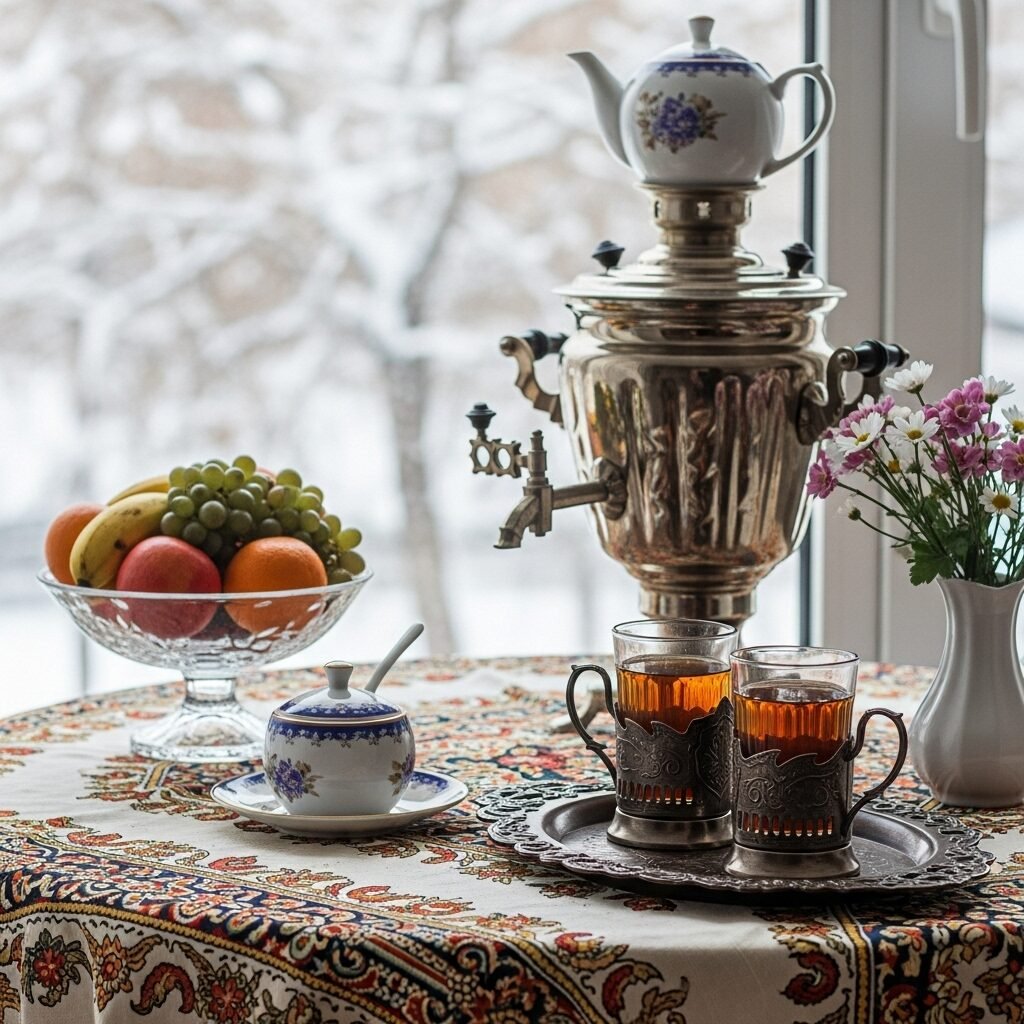
While the samovar serves as the heart of Russian tea gatherings, the traditional serving items complete this unique cultural experience. The zavarka, stakan, and podstakannik form the essential trio that defines authentic Russian tea service.
The Russian Tea Tradition
Zavarka: The Concentrated Brew
The foundation of Russian tea service:
What is Zavarka
- Concentrated tea brew forming the base of Russian tea drinking
- Strong tea infusion diluted with hot water from the samovar
- Each guest controls strength according to personal taste preference
Brewing Process
- Tea leaves steep much longer than Western traditions
- Creates robust, intense flavor profile
- Guests receive small portion of zavarka to mix with boiling water
- Allows customization of tea strength for each individual
Stakan: The Traditional Glass
Design and Purpose
- Simple, cylindrical glass showcasing tea’s rich amber color
- Clear material lets drinkers gauge tea strength visually
- Many families pass these special glasses through generations
- Holds special place in Russian tea culture
Podstakannik: The Decorative Holder
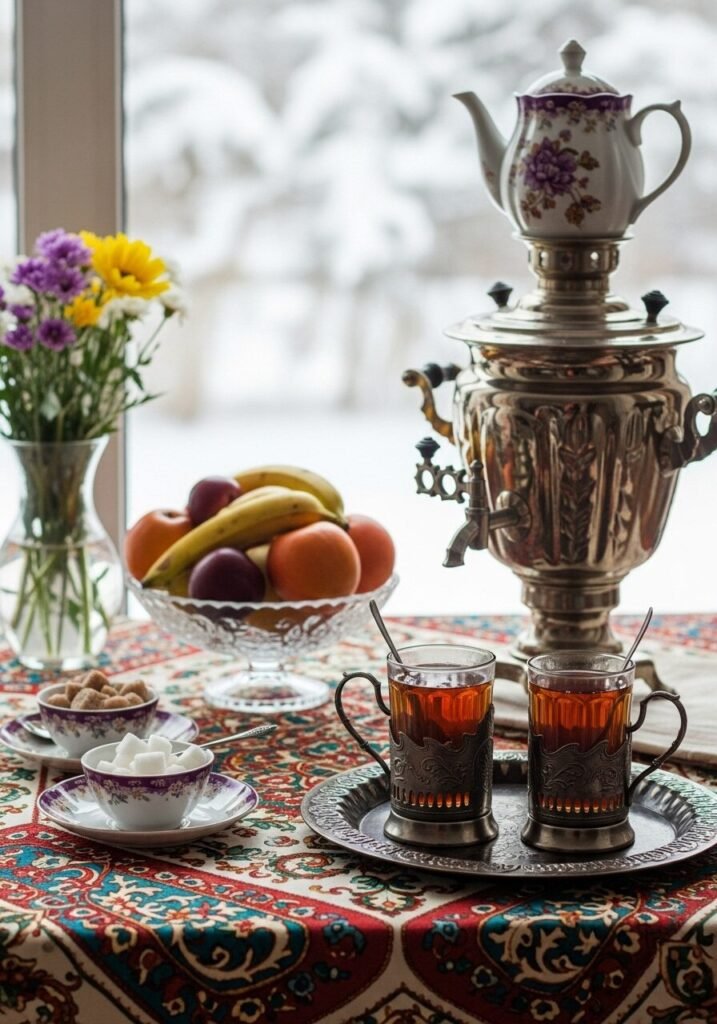
Form and Function
- Metal holder that cradles the hot stakan (“under the glass”)
- Protects hands from hot glass while adding elegance
- Features intricate designs with historical scenes, cultural symbols, or natural motifs
- Combines decorative beauty with practical purpose
Historical Significance
- Silver or nickel-plated versions became 19th-century status symbols
- Wealthy families commissioned custom designs
- Remain collectible items connecting people to Russian heritage
- Represent craftsmanship and cultural identity
Cultural and Social Aspects
Tea as Social Ritual
- Tea serving transcends mere refreshment
- Offering tea signals hospitality and warmth
- Creates space for extended conversations among family and friends
- Forms cornerstone of Russian social interaction
The Complete Experience
- Three elements combine for unique drinking experience
- Each component plays specific role in tea ceremony
- Balances tradition with practicality
- Creates meaningful ritual beyond simple beverage consumption
Indian Teaware: The Simplicity of Chai Culture
Indian chai culture brings tea to life through simple yet meaningful vessels. The humble kulhad, with its earthy clay body, connects street chai to ancient pottery traditions while creating a unique flavor profile that metal or porcelain cannot match.
The Kulhad and its Connection to Street Chai
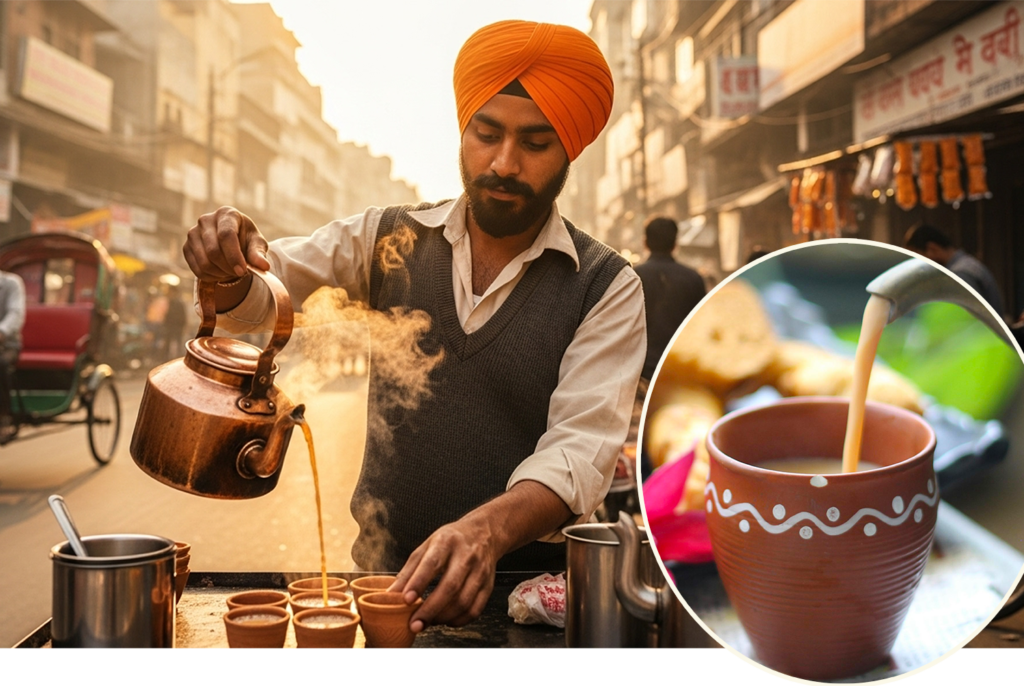
Kulhads stand as humble yet vital vessels in India’s rich tea culture. These handmade clay cups serve chai at street corners and train stations across the country, creating a distinct drinking experience.
The porous clay walls aerate the tea as it’s poured, which brings out deeper flavors that plastic or glass containers simply cannot match. Many tea lovers prize the earthy aroma that kulhads add to each sip of spiced chai.
The cultural value of kulhads extends beyond taste to environmental concerns. Made from pure mud and fired in kilns, these cups break down naturally after use, leaving no waste behind.
This eco-friendly aspect has sparked a revival of kulhad use in recent years as people grow more worried about plastic pollution. Street vendors who serve chai in these traditional vessels maintain a centuries-old practice that connects modern tea drinkers to their cultural roots while supporting local pottery crafts.
The Chai Wallah and the Enduring Tradition
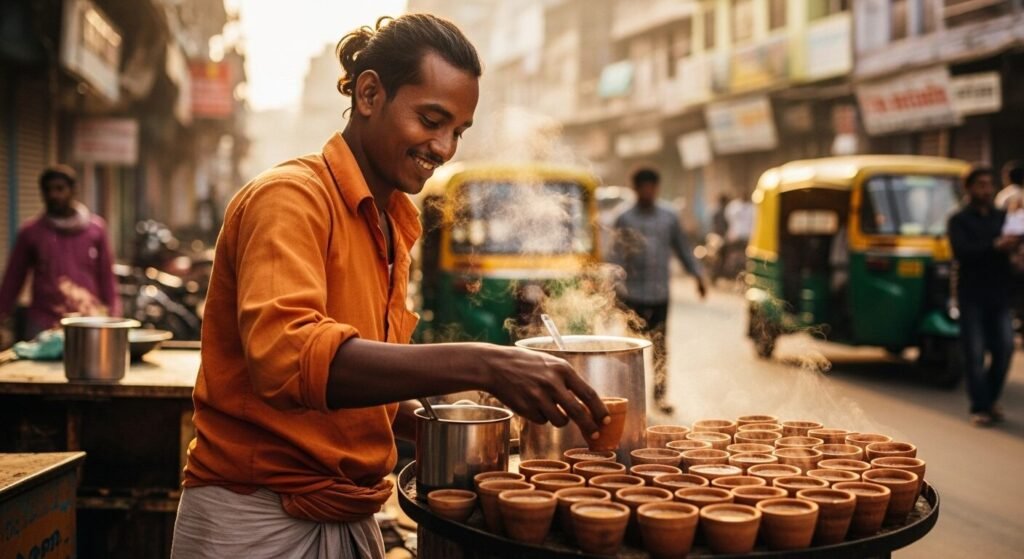
Chai wallahs stand as vital figures in Indian society, brewing tea at busy stands where locals gather daily. These tea vendors create magic with simple tools – a brass samovar heated by glowing coals, clay kulhads, and a blend of spices that make each cup unique.
The tea stand transforms into more than just a place to drink chai; it becomes a hub where people share stories, debate politics, and build community bonds.
Tea drinking in India goes beyond mere refreshment to become a cultural ritual passed through generations. At street corners and train stations, the familiar sight of a chai wallah pouring tea from height creates an instant sense of comfort for many Indians.
This tradition reflects the nation’s values of hospitality and connection, as strangers become friends over steaming cups of spiced tea served in small earthen vessels. The enduring chai culture shows how simple pleasures often create the strongest cultural traditions.
Broader Cultural Aspects of Teaware
Teaware shapes reflect the values and customs of each culture that creates it. Tea vessels from around the world tell stories of social class, religious beliefs, and artistic trends through their designs and materials.
Connection Between Vessel Form and Cultural Function
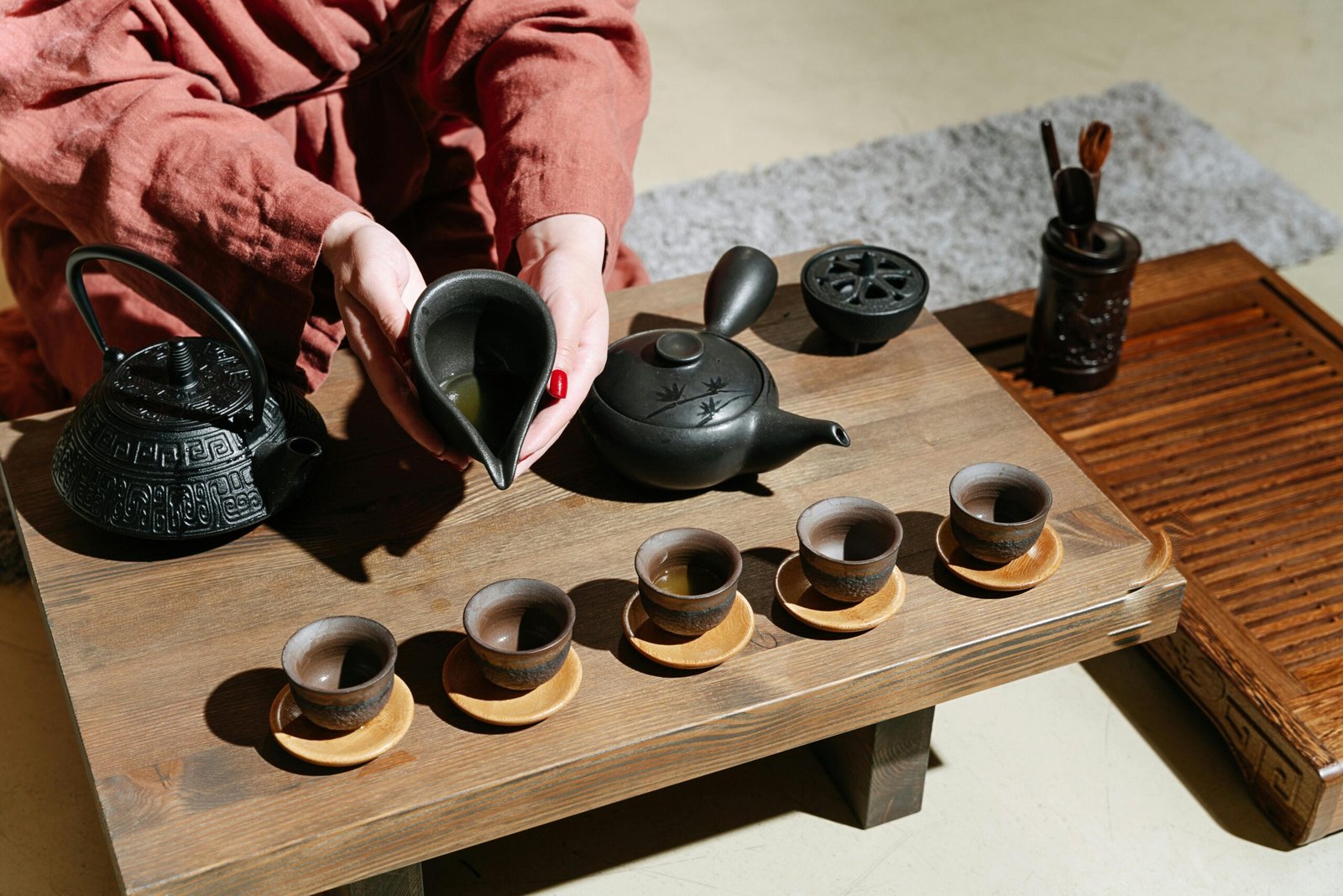
Tea vessels across cultures reveal deep links between form and function. Chinese Yixing teapots, made of special clay, absorb tea flavors over time and pair perfectly with oolong teas.
Japanese chawan bowls feature wide openings that cool matcha quickly and allow space for whisking with bamboo chasen. British porcelain teapots with longer spouts create smooth pouring for black teas served at formal gatherings.
Each design choice stems from specific cultural needs and tea preparation methods.
The materials used for teaware also reflect cultural values and available resources. Japanese tea utensils often showcase raku ware and Shigaraki pottery, embracing natural textures and wabi-sabi aesthetics.
Russian samovars, typically made of iron, maintain heat for hours during long social gatherings. Moroccan tea glasses display colorful designs and heat-resistant properties for mint tea service.
These distinct characteristics show how tea vessels serve as both practical tools and cultural symbols, telling stories about the people who created them and the tea traditions they value.
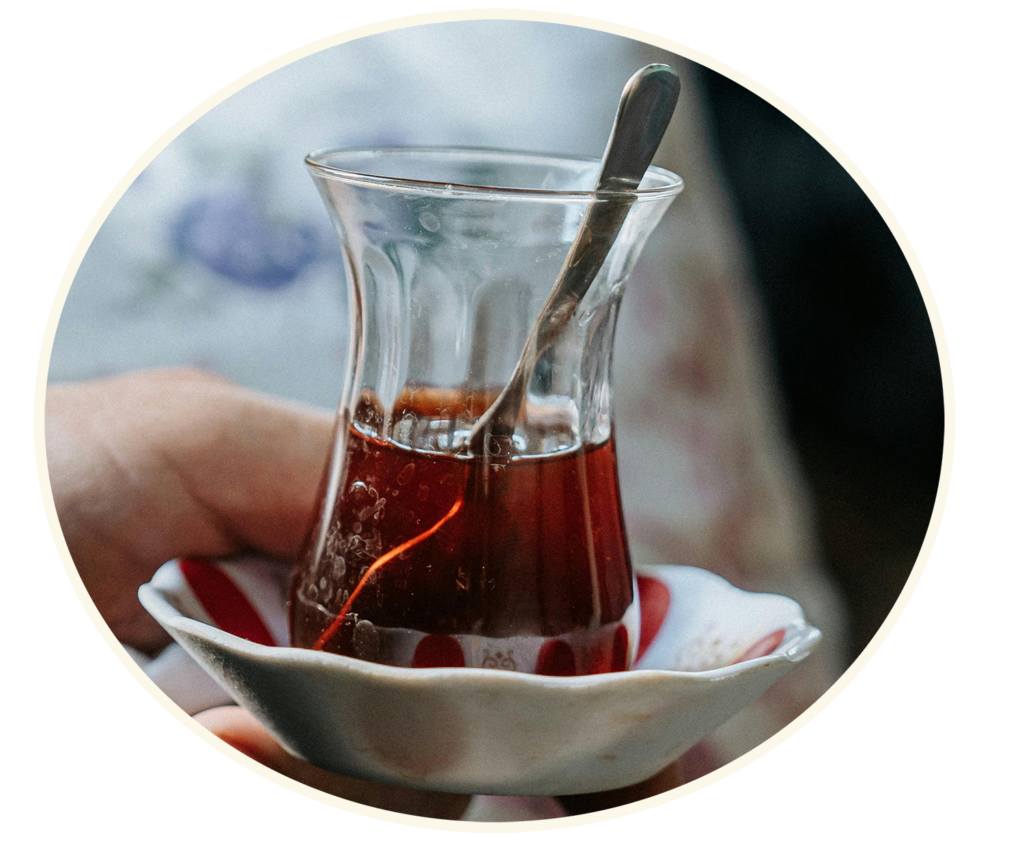
Explicit Symbolism in Traditional Teaware Pieces
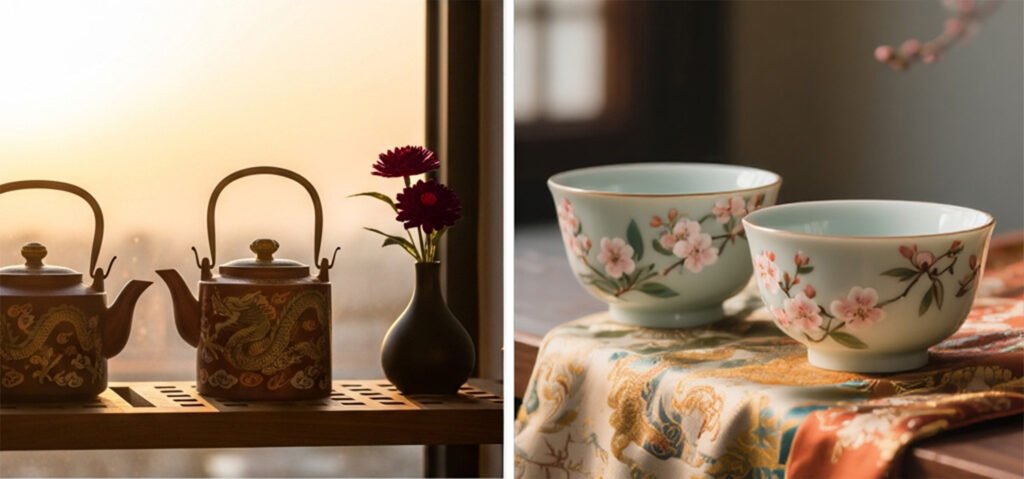
Traditional teaware pieces carry deep symbolic meanings across cultures. Dragons and phoenixes on Chinese teapots represent imperial power and good fortune, while cherry blossoms on Japanese chawan bowls symbolize life’s fleeting beauty.
Many patterns celebrate nature through carved bamboo tea scoops or lotus flower motifs painted on porcelain cups. These designs aren’t just decorative—they transform simple vessels into powerful cultural statements.
Pottery traditions from different regions showcase unique values through their teaware. Chinese Yixing clay pots feature auspicious symbols that enhance the brewing experience beyond mere function.
Japanese tea bowls embrace wabi-sabi through intentional imperfections, showing beauty in simplicity. The intricate patterns found on Moroccan glass teacups or Russian podstakannik holders tell stories of cultural identity and artistic expression.
Each carved detail or painted motif adds meaning to the daily ritual of enjoying tea.
Evolution of Teaware Through History and Global Exchange
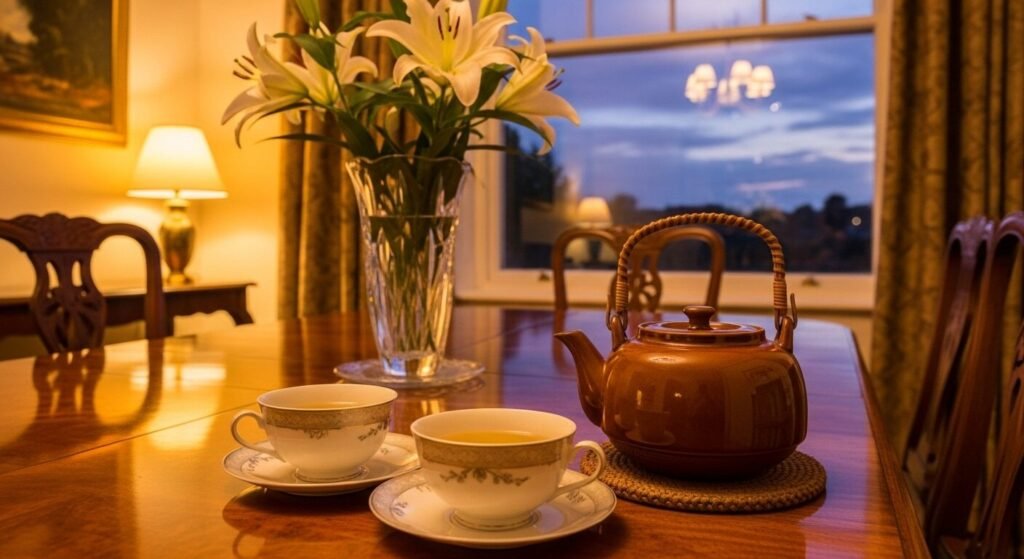
Teaware history shows rich cultural connections across Asia, with Korea’s Goryeo Dynasty pioneering celadon craftsmanship that spread to neighboring regions. Chinese artisans developed Yixing teapots from special Zisha clay, which enhanced tea flavors and became prized vessels for brew tea enthusiasts.
Japanese ceramics gained new influences after the 16th century incursions, leading to distinct styles in chawan matcha bowls and other vessels used in the japanese tea ceremony.
Tea vessels traveled along trade routes, changing to fit local customs while keeping their core purpose. The British East India Company planted tea in India, which sparked new teaware needs for different types of tea.
This global exchange created unique traditions – from delicate porcelain in Britain to sturdy clay kulhads in India. Each culture adapted vessels to match their tea rituals, whether for casual teas or formal ceremonies, showing how teaware reflects both artistic expression and practical function across civilizations.
Conclusion
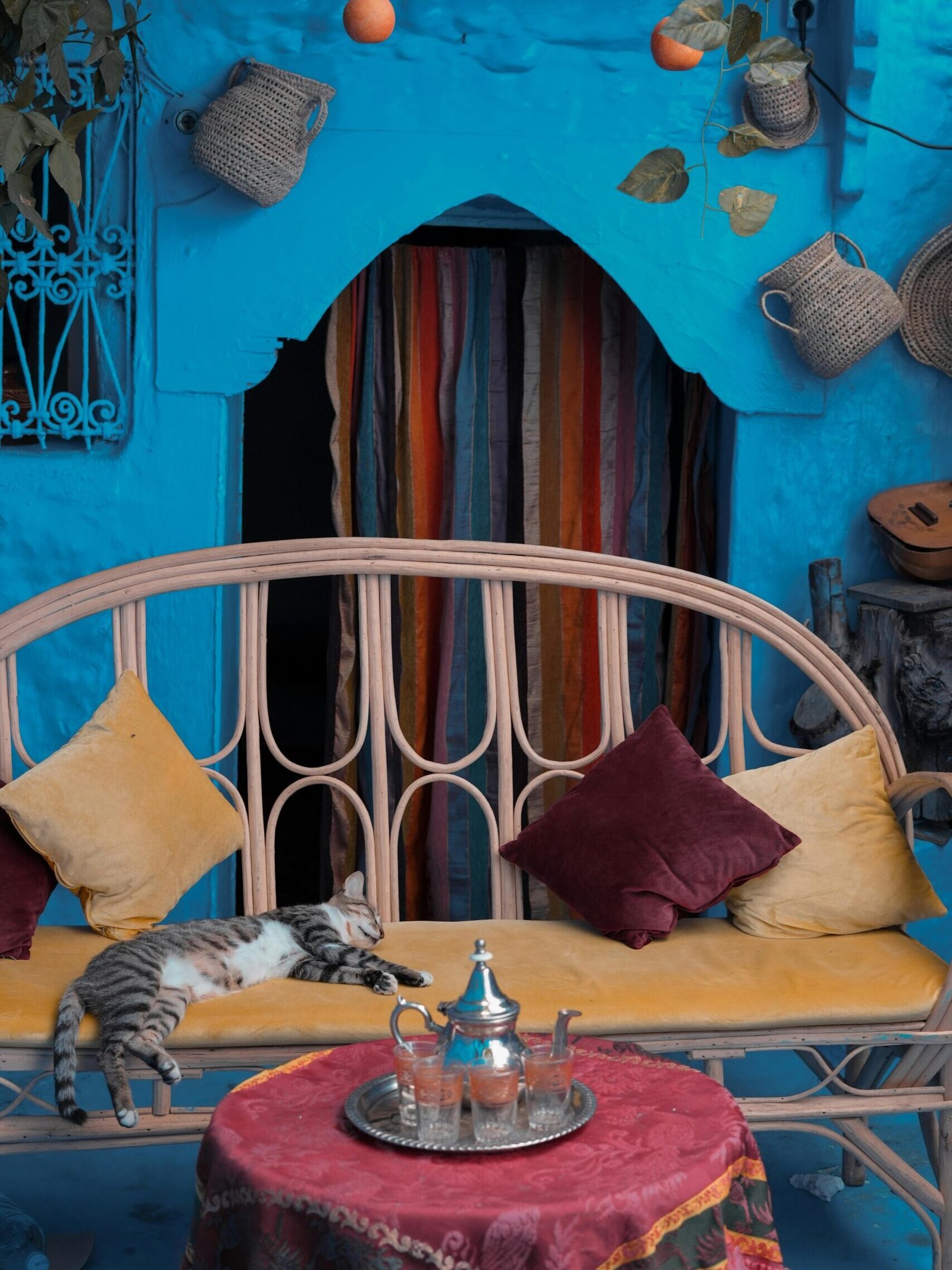
Tea vessels reflect the soul of cultures across the globe, from Chinese Yixing pots to British porcelain sets. Each cup, pot, and whisk tells a story of tradition, art, and human connection through shared drinks.
The beauty of tea culture lies in its blend of function and meaning, where simple clay or bamboo transforms into bridges between people. Your journey through tea traditions need not stop at knowing facts but can grow into a daily practice with your own special cups and kettles.
The world waits in each steaming cup, ready to share centuries of wisdom through the simple act of brewing leaves in water.
FAQs
1. What materials are used to make traditional teaware?
Traditional teaware is made of clay, porcelain, glass, or bamboo. Yixing ware from China is famous for being made out of clay that enhances the flavor of tea. Japanese teapots like those from Tokoname are often ceramic or porcelain with special glazes that hold the tea without affecting its taste.
2. How does the type of teaware affect the taste of tea?
The material of your teaware can change how your tea tastes. Clay teapots, especially those carved by hand, can absorb some flavors and odors while adding minerals to the water for tea. Porcelain and glass are neutral and won’t alter the taste of the tea.
3. What is special about Japanese green tea ceremonies?
Japanese green tea ceremonies focus on harmony and respect. You whisk the matcha tea in special bowls during these rituals. The Empire of Japan helped spread these traditions, which value both the flavor of tea and the beauty of the ceremony itself.
4. Why is Shigaraki ware popular for tea ceremonies?
Shigaraki ware is valued for its rustic beauty and excellent heat retention. It comes from one of Japan’s oldest pottery regions. The natural ash glazes create unique patterns that tea masters prize for traditional Chinese tea ceremonies and Japanese tea gatherings.
5. What kind of tea kettle works best for different teas?
For Japanese green tea, use ceramic kettles that maintain steady temperatures. Clay kettles work well for oolong and black teas because they keep water hot longer. Glass kettles let you watch the water heat up, which helps when you need precise temperatures for delicate teas.
6. How does water affect tea production and taste?
Water quality directly impacts tea production and final flavor. Soft water brings out subtle notes in green teas while harder water can enhance black tea’s boldness. The temperature matters too—boiling water works for black tea, but cooler water preserves the delicate taste of green and white varieties.
References
- https://teacultureoftheworld.com/blogs/all/fascinating-tea-culture?srsltid=AfmBOooptaFHnCSeU70fhywDDQslBNjRw0-wsqkSOqcCBxg5E-_5I9zA
- https://hortherbpublisher.com/index.php/jtsr/article/html/3834
- https://www.researchgate.net/publication/391533352_Research_on_Cultural_Teaching_of_Chinese_Tea_Culture_in_International_Chinese_Language_Education (2025-05-10)
- https://teacup.media/teahistorypodcastepisodes/ep-10-yixing-teaware-and-the-gongfu-tea-ceremony
- https://jessesteahouse.com/products/duidui-s-fairness-pitcher?srsltid=AfmBOop89dT_7oJpxJrn0JujteL_YaBh0XVPH0JJlvL3_Ite6n8a8JQu
- https://www.paperandtea.com/blogs/journal/tea-in-china-the-worlds-oldest-tea-culture
- https://tiberiogracco.com/product/tea-set-kyusu-japanese-teapot-and-chawan-ts-00109/
- https://japanobjects.com/features/tea-ceremony-utensils
- https://millenniumgalleryjp.com/en-us/blogs/journal/japaneseteaceremony?srsltid=AfmBOorWFXORL_DnX8yVzfHuxLjG2qUR3NGVagAwKW4pDvcm7BRaFoMm (2024-03-10)
- https://www.londondaily.news/whats-included-in-a-traditional-english-tea-set-with-tray/ (2024-11-16)
- https://etheses.bham.ac.uk/4915/2/Beddoes14MPhil.pdf
- https://richwoman.co/afternoon-tea-a-social-institution-a-timeless-british-tradition-challenging-anxiety-crisis/
- https://www.grandmoroccanbazaar.com/blog/the-timeless-tradition-of-moroccan-berrad-tea-pot/?srsltid=AfmBOorZyN0R56bgxhpCnCIyMhNSjR6HfS_vmPXtVQbxvNqpRVoxL3J8
- https://originaltravelsco.com/moroccan-mint-tea-hospitality/ (2025-04-12)
- https://jyyna.co.uk/moroccan-mint-tea/
- https://www.invaluable.com/blog/russian-samovar/?srsltid=AfmBOoo4hwpbdG3cPiTQEl3S3j4mZR2aX0dxpiZ1s_DlLPG9LMAaECph
- https://www.foodandwine.com/tea/guide-zavarka-russias-traditional-tea-concentrate (2017-05-24)
- https://www.goya.in/blog/kulhads-for-that-taste-of-the-earth-in-your-chai (2024-07-18)
- https://theorganicteaproject.com/blogs/journal/the-art-and-culture-of-indias-chai-wallahs-a-journey-through-the-vibrant-world-of-indian-tea-stands?srsltid=AfmBOoptPM1RbQRhfvbkZdO43urjlVO1MQV4KO-M0lJVcPnZkH0s_I2i (2023-03-20)
- https://www.dharamkotstudio.com/exploring-the-connection-between-pottery-and-tea-culture/?srsltid=AfmBOooK6FaOQZmhiS36lcpPGQDI_0WPr1nhnowlHQz5TQMvMI7t0LtT
- https://www.dharamkotstudio.com/exploring-the-connection-between-pottery-and-tea-culture/?srsltid=AfmBOopzlSVQih_sRJjh0KsevYIwpcRupmlAva4BwayZ5K2Dn9TLShk7
- https://www.acalatea.com/blogs/news/the-evolution-of-teaware-from-ancient-korea-to-western-tables?srsltid=AfmBOopL-uFuMvL3eblLPNXjM4whMd6BJZzK4gumCS-SilzHuYvHHFi7


